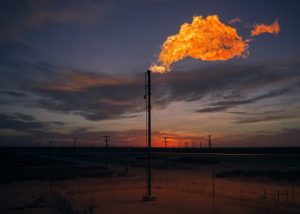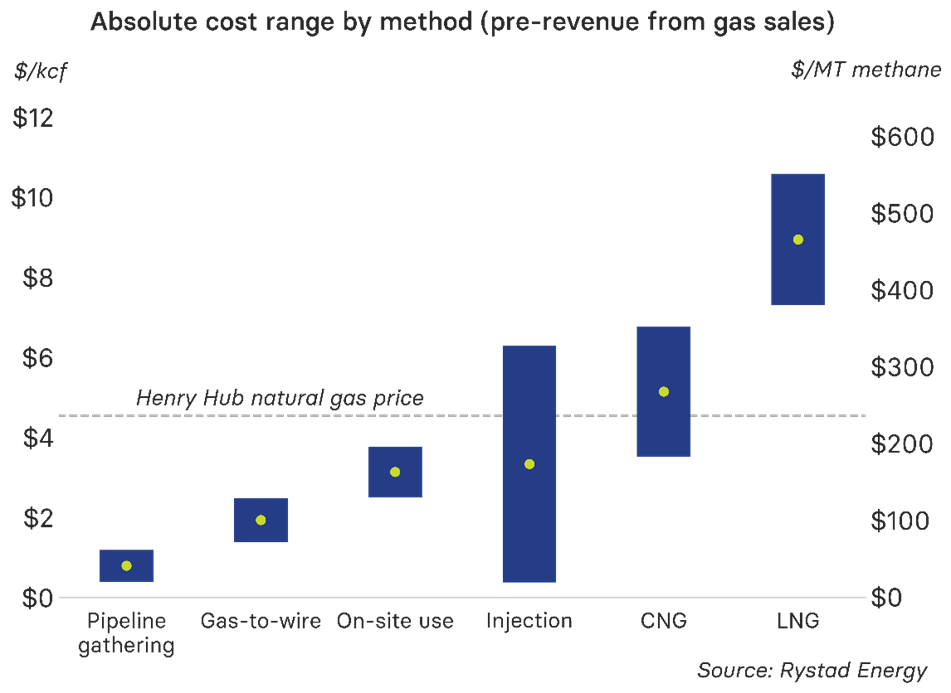 By Jon Goldstein and Grace Weatherall
By Jon Goldstein and Grace Weatherall
Reducing the amount of methane emitted from oil and gas infrastructure is among the cheapest and simplest solutions we have to reduce global warming quickly while protecting public health. The Environmental Protection Agency is in the midst of developing rules to curb these emissions from oil and gas producers across the country.
A new analysis commissioned by EDF and conducted by Rystad Energy makes it clear that eliminating routine flaring — a major source of rogue emissions — should be part of EPA’s methane rulemaking.
Though there are valid safety reasons for some minimal flaring, most of it occurs via routine flaring — when oil producers simply don’t have a place to put the natural gas that emerges from the ground during oil production and simply burn it off. More than $1 billion of natural gas is wasted at flares every year, driving unnecessary and harmful climate and local air pollution — including methane, an extremely potent greenhouse gas — when natural gas is not fully burned.
Rystad’s report includes two key findings that should inform EPA’s rulemaking.
Reducing flaring is cost-effective and doable
First, reducing routine flaring is cost-effective when the potential revenue from selling the captured natural gas is considered. In most cases, high flaring rates are the result of poor planning, like delays in connecting oil wells to gas infrastructure, a lack of gas transport capacity, or a company’s failure to consider this “waste” a viable product.
Some flaring fixes cost so little that they can turn a profit for operators and even increase electric grid resiliency. For example:
- Ensuring wells are connected to gas gathering systems before they can operate and using gas on-site can reduce flaring and generate a net profit.
- Using otherwise flared gas to generate electricity for the power grid can be done at no net cost.
- Requiring connection to gathering systems, compressing gas on-site to sell later, or reinjecting gas into storage reservoirs are all cost-effective, widely applicable, and scalable approaches.
- On-site compression and injection strategies alone could eliminate roughly a third of flaring nationwide.
Low flaring rates possible with strong policies
Second, national flaring rules can significantly reduce flaring rates by ensuring operators in the biggest flaring states borrow from the example of states like Colorado and countries like Norway, which have proven that very low flaring rates (0.2% and below) are economically and technically feasible. Flaring beyond 0.2% is excessive and unnecessary, according to Rystad’s conclusions.
Nationally, 70% of all flared gas is burned by only 7% of all wells, and more than 90% of all flaring occurs in just a handful of states. Texas and North Dakota, together, are responsible for 75% of all flaring. The flaring rate in North Dakota, for example, is 7%. Leaders in these high-producing and high-flaring states have so far shown little-to-no initiative in requiring flaring reductions or ending the practice of routine flaring. National requirements would spark meaningful reductions and ensure that all companies in the United States — not just the forward-thinking ones or those in Colorado and New Mexico — have to play by the same rules.
Flaring is not inevitable — it’s a problem with concrete, cost-effective solutions that have already been put to the test in oil and gas regions across the U.S. and the world. The EPA’s methane rules have the potential to operationalize these solutions as part of the fastest and cheapest climate strategy in our toolbox.











